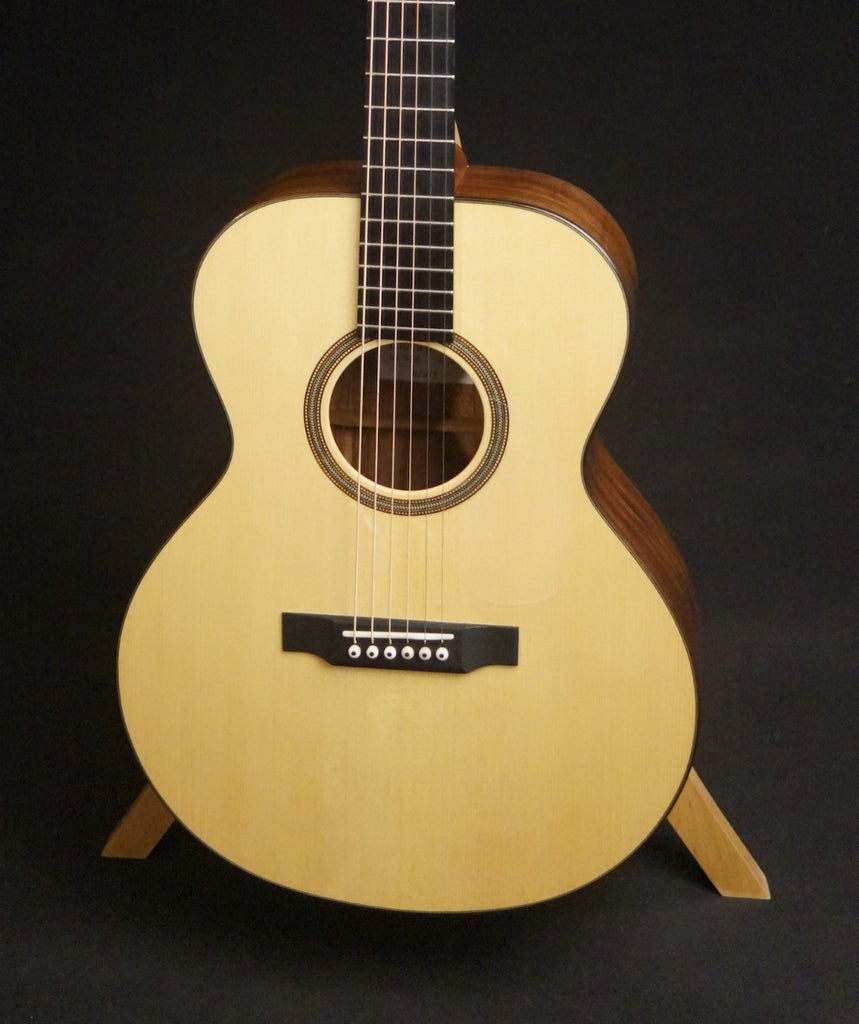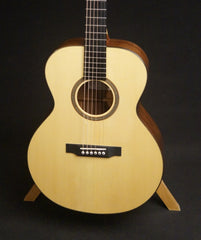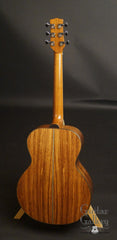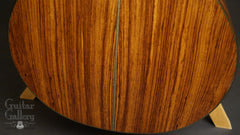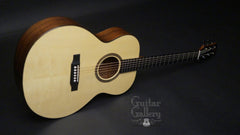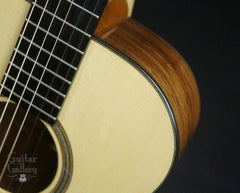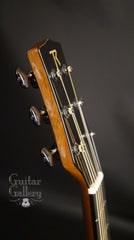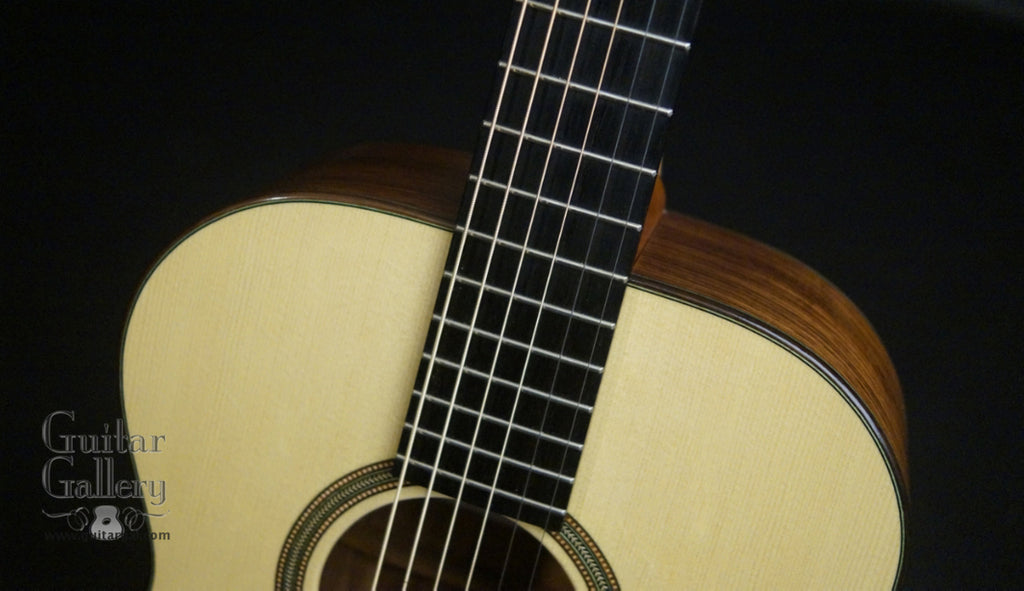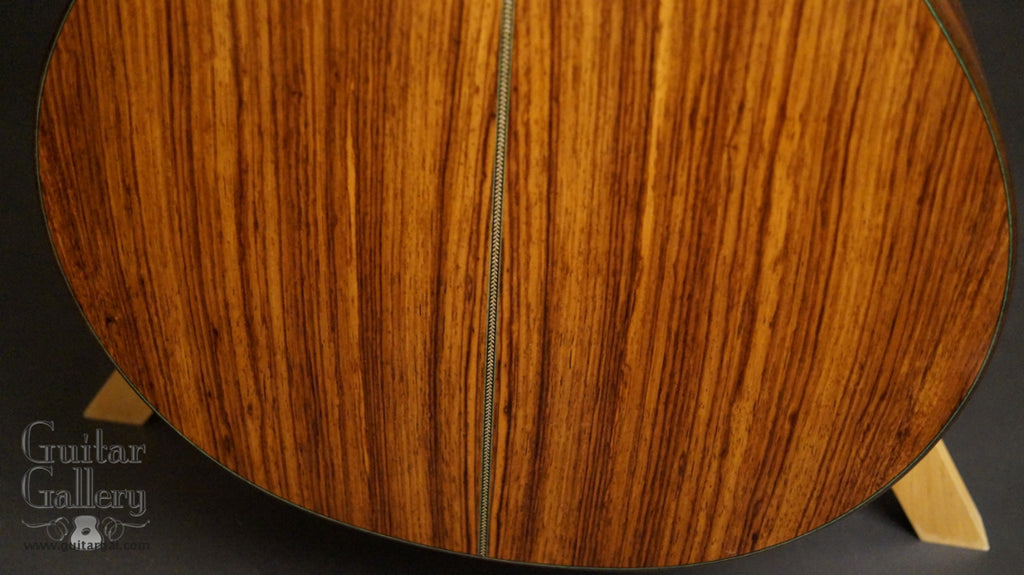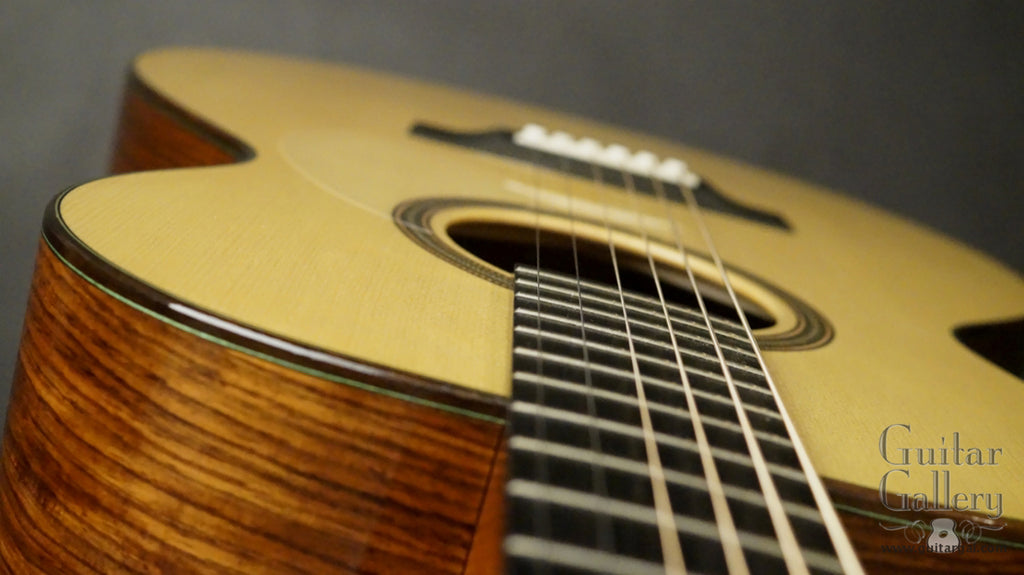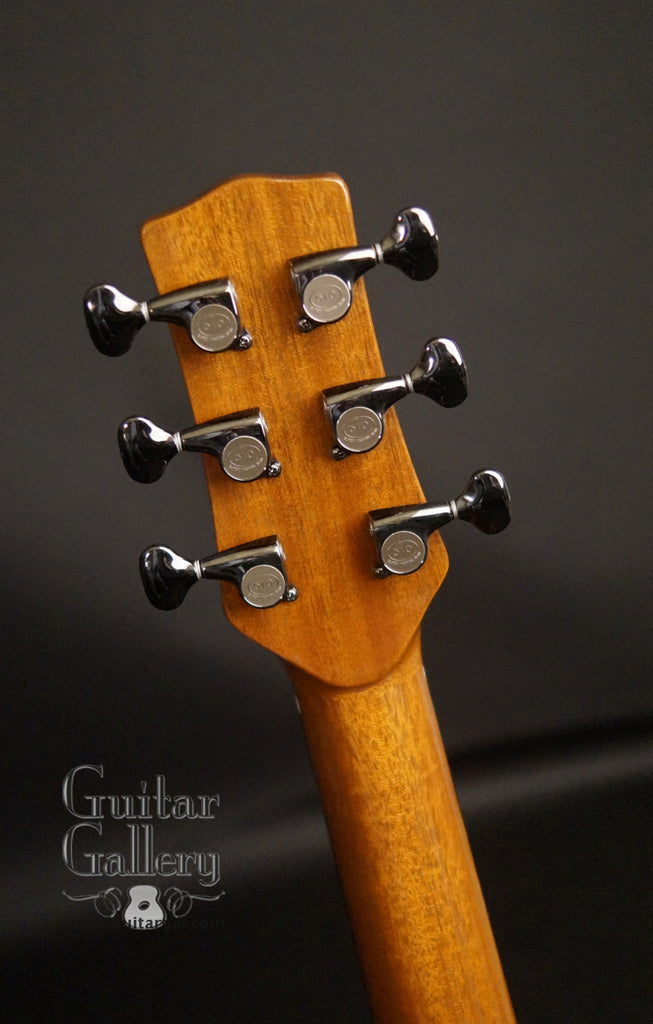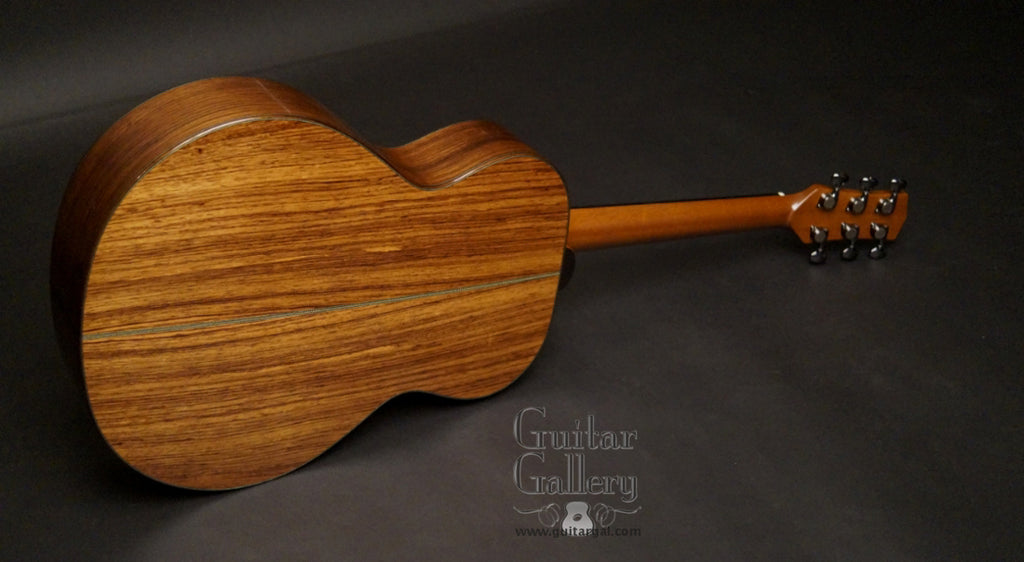Thomas Rein RJN-3 Guitar (2015)
Please Call to Inquire

Rein RJN-3 Guitar (used, 2015)-SOLD
All my steel-string guitars are made with my proprietary RJN neck joint, which stands for Rein AdJustable Neck. The RJN is similar in concept to many 19th Century guitars which allowed action adjustments to be carried out by turning a bolt recessed in the heel of the neck. These19th Century guitars relied on lots of “play” in the neck attachment to achieve adjustability and could be viewed as an acoustic liability due to the poor coupling between the neck and body.
Starting from a Blank Page
When I returned to building steel-string guitars in 2006 it became apparent to me rather quickly that an adjustable neck angle was a very elegant solution to problems that are endemic to steel-string guitars. In 2013 I embarked on making some improvements to the original RJN design. The biggest difference between the older and the current design is that now all the adjusting screws are inside of the guitar, on the headblock. A ball-end hex key (which is supplied with the guitar) is inserted through the soundhole to engage each of the cap screws seen on the headblock. One of the screws activates a locking mechanism and the other is the action adjusting screw. In spite of the non-traditional design there is no loss of sustain or solidity of tone with the RJN. It solves the three big problems that plague steel-string guitars: periodic action adjustments, neck resets, and the “14-fret hump”.
Adjusting the Action While Up to Pitch
The string height off the fretboard will change with humidity swings, higher with elevated humidity and lower with lower humidity. The standard way of keeping a guitar playing its best through these cycles is to take the strings off and raise or lower the bridge saddle. This is not too serious, but is a nuisance and usually one tends to put it off. A neck reset is a much more significant a repair and virtually a given with a lightly-built guitar. A glued-in dovetail compounds the difficulty of a neck reset. Finding a qualified repairman who can do a skillful neck reset is sometimes difficult and usually results in an extended period of being without your guitar. Invariably, a neck reset will change the sound of the guitar because the height of the strings off the soundboard is increased, which adds more torqueing pressure on the top. This change in tone could either be perceived as positive or negative and is difficult to predict. The RJN makes it possible to keep the string action at the player’s preference by loosening the RJN locking mechanism, adjusting the action (while the guitar is up to pitch), and retightening the locking mechanism. A neck reset will never be necessary and the tone of the guitar does not change with action adjustments because the height of the saddle stays the same. The saddle height can be set for optimum tone and simply left there. With a fixed neck it is usual practice to over-set the neck angle on a brand new guitar. This yields a higher-than-desired saddle and the hope is that as the tension settles into the guitar, and the plates take a set, the saddle can be brought down to the optimal height. If the top and back don’t settle in exactly as hoped then the guitar is left with a high saddle. A high saddle will tighten up the sound since it is exerting more torque on the soundboard.
Forget About the 14th-fret Hump
The “14-fret hump” results from all the string tension that is carried on the neck being transferred to the rather small area between the soundhole and neck joint. Over time this bulges the tongue of the fretboard up. Humidity swings exacerbate the problem. With the RJN the entire tongue is floating and is supported with a graft of wood under the fingerboard. The support graft is recessed into a mortise cut in the soundboard. The net result is the entire fingerboard, from first to last fret, moves as complete unit and remains planar. An added bonus is the action can be set quite low since the plane of the frets on the tongue is not affected by string tension. In fact, the fretboard from the neck/body joint to the end of the fingerboard is under no tension at all.

